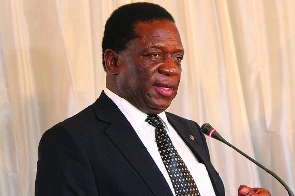The Director of Technology, Climate Change and Natural Resources Management at the Economic Commission for Africa (ECA), Jean-Paul Adam, told journalists during a virtual press briefing on 10 June 2020 that Africa contributes less than 1% to the world’s digital economy, which accounts for about 15% of global GDP.
He said the continent needs about US$100 billion to achieve universal, affordable, and good quality internet access by 2030 (according to the World Bank). Presently, only 17.8 percent of households in Africa have internet at home and the continent accounts for only 21percent of worldwide internet users.
It is estimated that over a quarter of a billion school children in Africa have been affected by COVID-19 and most of them lack the digital tools to continue their education online.
“This is very concerning and conveys a strong message that broadband connectivity is absolutely crucial for educational institutions and businesses to continue to provide essential services,” said Mr. Adam, adding “reliable, high-speed internet is key to ensuring that hospitals and medical institutions can access the global information network and resources necessary to fight COVID-19.”
He cited affordability as one of the biggest barriers to internet access in Africa, stating “The average cost of 1GB of data on the continent is 7.12 percent of average income, with some countries having rates as high as 20 percent, which is way above the 1 – 2 percent deemed to be affordable.”
In terms of bandwidth, Mr. Adam said many African countries still have bandwidth as low as 64 kilobits. He noted that “in certain situations, bandwidths for an entire country is less than what is available to an individual residential subscriber in the USA.”
“Data shows that downloading a 5GB movie took 734 minutes in the Democratic Republic of Congo, 788 minutes in Sao Tome, 850 minutes in Ethiopia, 965 minutes in Niger, 1,342 minutes in Equatorial Guinea and only about 11 minutes and 8 seconds in Singapore,” said Mr. Adam.
Adding to the issues of access and bandwidth is what Mr. Adam referred to as a “deplorable digital gender gap in Africa” with a 33.8 percent internet penetration rate for men and only 22.6 percent for women in 2019.
Despite the limited connectivity across the continent (with close 40% of the population online), Mr. Adam said the digital response to COVID-19 has been great.
He cited Ghana’s COVID-19 Tracker App, which traces contacts of persons infected by the virus and shows where they have been in recent times through various telephone-related data. Such persons are then linked to health professionals for urgent action to be taken.
Another positive example is in Nigeria where an ICT company created the COVID-19 Triage Tool, as a free online tool to help users self-assess their coronavirus risks category based on their symptoms and their exposure history.
Mr Adam emphasized that as the world races with implementing digital technologies to accelerate social-economic activities due to a slowdown with COVID-19, there’s a need for concerted government action in partnership with the private sector and other stakeholders to be able to achieve universal, affordable and high-quality broadband access.
“While the private sector can drive broadband initiatives, the government can play a crucial role by implementing effective sector regulation, addressing potential market failures, and creating the conditions for an open, competitive broadband sector.”
As Africa strives to adapt to the Fourth Industrial Revolution while modernizing and expanding its manufacturing base and broadening economic and trade integration through the African Continental Free Trade Area (AfCFTA), Mr. Adam said “we need to harness the potential of the new and emerging technologies including Big Data, Artificial Intelligence, and machine learning, etc”
Mr. Adam was optimistic that the AfCTA provides a timely gateway way to the future, especially given the impact of COVID-19 on the global supply chain.
Click to view details



Business News of Tuesday, 16 June 2020
Source: goldstreetbusiness.com

















